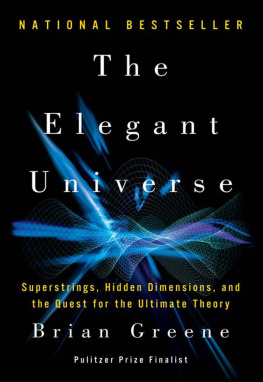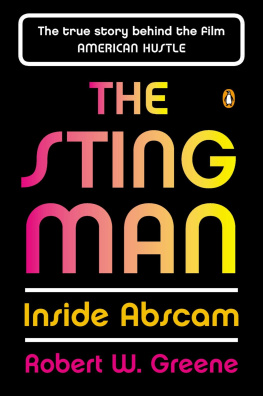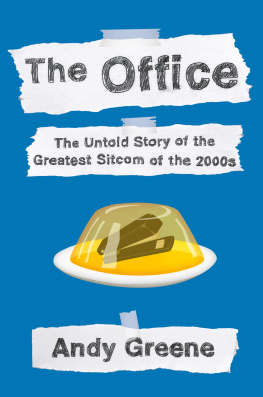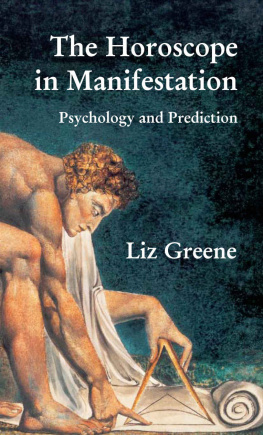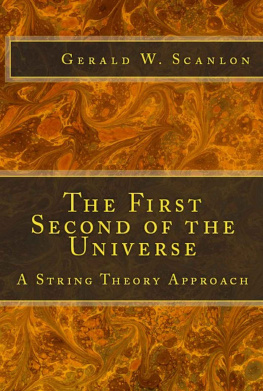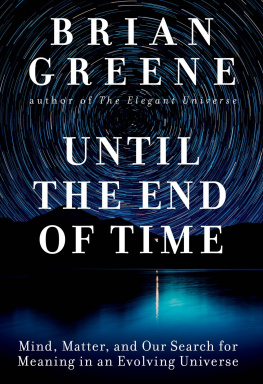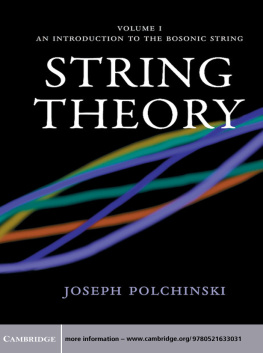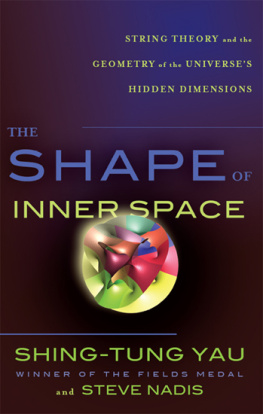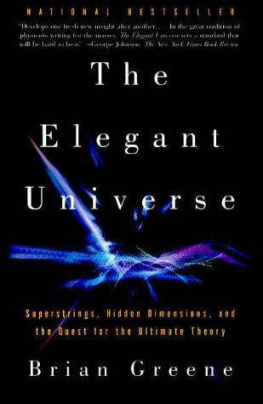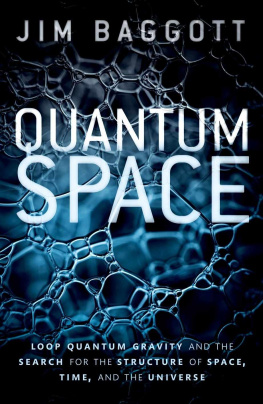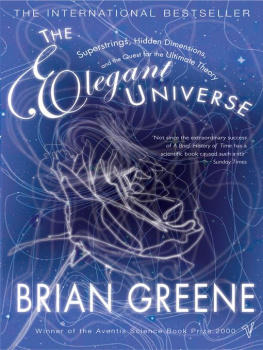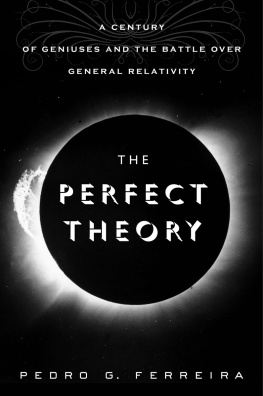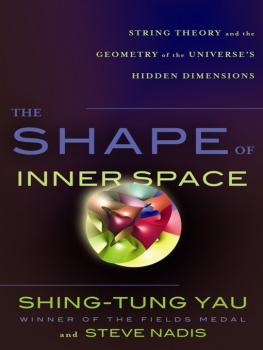Copyright 2003, 1999 by Brian R. Greene
For information about permission to reproduce selections from this book, write to
Permissions, W. W. Norton & Company, Inc.,
500 Fifth Avenue, New York, NY 10110.
W. W. Norton & Company, Inc.
500 Fifth Avenue, New York, N.Y. 10110
www.wwnorton.com
W. W. Norton & Company Ltd.
Castle House, 75/76 Wells Street, London W1T 3QT
Preface
D uring the last thirty years of his life, Albert Einstein sought relentlessly for a so-called unified field theorya theory capable of describing nature's forces within a single, all-encompassing, coherent framework. Einstein was not motivated by the things we often associate with scientific undertakings, such as trying to explain this or that piece of experimental data. Instead, he was driven by a passionate belief that the deepest understanding of the universe would reveal its truest wonder: the simplicity and power of the principles on which it is based. Einstein wanted to illuminate the workings of the universe with a clarity never before achieved, allowing us all to stand in awe of its sheer beauty and elegance.
Einstein never realized this dream, in large part because the deck was stacked against him: In his day, a number of essential features of matter and the forces of nature were either unknown or, at best, poorly understood. But during the past half-century, physicists of each new generationthrough fits and starts, and diversions down blind alleyshave been building steadily on the discoveries of their predecessors to piece together an ever fuller understanding of how the universe works. And now, long after Einstein articulated his quest for a unified theory but came up empty-handed, physicists believe they have finally found a framework for stitching these insights together into a seamless wholea single theory that, in principle, is capable of describing all physical phenomena. The theory, superstring theory, is the subject of this book.
I wrote The Elegant Universe in an attempt to make the remarkable insights emerging from the forefront of physics research accessible to a broad spectrum of readers, especially those with no training in mathematics or physics. Through public lectures on superstring theory I have given over the past few years, I have witnessed a widespread yearning to understand what current research says about the fundamental laws of the universe, how these laws require a monumental restructuring of our conception of the cosmos, and what challenges lie ahead in the ongoing quest for the ultimate theory. I hope that, by explaining the major achievements of physics going back to Einstein and Heisenberg, and describing how their discoveries have grandly flowered through the breakthroughs of our age, this book will both enrich and satisfy this curiosity.
I also hope that The Elegant Universe will be of interest to readers who do have some scientific background. For science students and teachers, I hope this book will crystallize some of the foundational material of modern physics, such as special relativity, general relativity, and quantum mechanics, while conveying the contagious excitement of researchers closing in on the long-sought unified theory. For the avid reader of popular science, I have tried to explain many of the exhilarating advances in our understanding of the cosmos that have come to light during the last decade. And for my colleagues in other scientific disciplines, I hope this book will give an honest and balanced sense of why string theorists are so enthusiastic about the progress being made in the search for the ultimate theory of nature.
Superstring theory casts a wide net. It is a broad and deep subject that draws on many of the central discoveries in physics. Since the theory unifies the laws of the large and of the small, laws that govern physics out to the farthest reaches of the cosmos and down to the smallest speck of matter, there are many avenues by which one can approach the subject. I have chosen to focus on our evolving understanding of space and time. I find this to be an especially gripping developmental path, one that cuts a rich and fascinating swath through the essential new insights. Einstein showed the world that space and time behave in astoundingly unfamiliar ways. Now, cutting-edge research has integrated his discoveries into a quantum universe with numerous hidden dimensions coiled into the fabric of the cosmosdimensions whose lavishly entwined geometry may well hold the key to some of the most profound questions ever posed. Although some of these concepts are subtle, we will see that they can be grasped through down-to-earth analogies. And when these ideas are understood, they provide a startling and revolutionary perspective on the universe.
Throughout this book, I have tried to stay close to the science while giving the reader an intuitive understandingoften through analogy and metaphorof how scientists have reached the current conception of the cosmos. Although I avoid technical language and equations, because of the radically new concepts involved the reader may need to pause now and then, to mull over a section here or ponder an explanation there, in order to follow the progression of ideas fully. A few sections of Part IV (focusing on the most recent developments) are a bit more abstract than the rest; I have taken care to forewarn the reader about these sections and to structure the text so that they can be skimmed or skipped with minimal impact on the book's logical flow. I have included a glossary of scientific terms for an easy and accessible reminder of ideas introduced in the main text. Although the more casual reader may wish to skip the endnotes completely, the more diligent reader will find in the notes amplifications of points made in the text, clarifications of ideas that have been simplified in the text, as well as a few technical excursions for those with mathematical training.
I owe thanks to many people for their help during the writing of this book. David Steinhardt read the manuscript with great care and generously provided sharp editorial insights and invaluable encouragement. David Morrison, Ken Vineberg, Raphael Kasper, Nicholas Boles, Steven Carlip, Arthur Greenspoon, David Mermin, Michael Popowits, and Shani Offen read the manuscript closely and offered detailed reactions and suggestions that greatly enhanced the presentation. Others who read all or part of the manuscript and offered advice and encouragement are Paul Aspinwall, Persis Drell, Michael Duff, Kurt Gottfried, Joshua Greene, Teddy Jefferson, Marc Kamionkowski, Yakov Kanter, Andras Kovacs, David Lee, Megan McEwen, Nari Mistry, Hasan Padamsee, Ronen Plesser, Massimo Poratti, Fred Sherry, Lars Straeter, Steven Strogatz, Andrew Strominger, Henry Tye, Cumrun Vafa, and Gabriele Veneziano. I owe special thanks to Raphael Gunner for, among many other things, his insightful criticisms at an early stage of writing that helped to shape the overall form of the book, and to Robert Malley for his gentle but persistent encouragement to go beyond thinking about the book and to put "pen to paper." Steven Weinberg and Sidney Coleman offered valuable advice and assistance, and it is a pleasure to acknowledge many helpful interactions with Carol Archer, Vicky Carstens, David Cassel, Anne Coyle, Michael Duncan, Jane Forman, Wendy Greene, Susan Greene, Erik Jendresen, Gary Kass, Shiva Kumar, Robert Mawhinney, Pam Morehouse, Pierre Ramond, Amanda Salles, and Eero Simoncelli. I am indebted to Costas Efthimiou for his help in fact-checking and reference-finding, and for turning my initial sketches into line drawings from which Tom Rockwell createdwith the patience of a saint and a masterful artistic eyethe figures that illustrate the text. I also thank Andrew Hanson and Jim Sethna for their help in preparing a few of the specialized figures.

